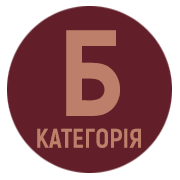THE REPRESENTATION OF THE UKRAINIAN CITY IN MODERN MILITARY POETRY
DOI:
https://doi.org/10.24919/2522-4565.2023.54.6Keywords:
intertextuality, allusion, locus, symbolical image, image of a city, military poetry, imagologyAbstract
In the article the tendencies of representation of Ukrainian cities in modern military poetry on the material of the anthology “Spring Armed” (37 poems from the collection) are studied, and it is concluded that in terms of culture this phenomenon testifies to the fixation of collective memorial practices. The representation of city names as intertextems, loci, topoecphrasis and symbolic images is considered. Within the first tendency, the names of cities are outlined as unmarked intertextems (according to the views of L. Skoryna) with a general cultural nature, that are acting as accumulators of narratives about the course of the Russian-Ukrainian war spread through the media. Therefore, the names of cities in this context are defined as allusions that enable an informed reader to interpret a poetic work adequately. Among the most frequent names are Kharkiv, Kyiv, Mariupol, Kherson and others. The other way is to refer to the cities as loci in the imagological prospective, as well as through the prism of the concept of “national cosmos” by S. Andrusiv. Based on it, there is a possibility of discussing the similarity of the functions of images of cities in modern poetry and in the works of the Second World War. It has also been studied that the name of the city can be a topoecphrasis, and its peculiar feature is the “interference” of military discourse into its space-time, as well as the detailing of events compared to the first tendency. It is established that due to the specifics of the poetics of the studied texts, it is difficult to draw the line between the appeal to the city as a locus and as a symbolic image. However, in our opinion, in the latter case the city becomes more “animated”, intimated for the author, or, on the other hand, rooted in historical and cultural contexts (Baturin, Kruty, etc.). Therefore, it is concluded that the representation of the Ukrainian city in modern military literature is multifaceted, and performs the leading role in the development of military and memorial narratives well-known for Ukraine and foreign space. So, the cities are not only the scenery, they are witnesses of war events and crimes of the Russian Federation, its metaphorical participants.
References
Андрусів С. Модус національної ідентичності. Львівський текст 30-х років XX століття : монографія. Тернопіль : Джура; Львів : ЛНУ ім. І. Франка, 2000. 340 с.
Весна озброєна : поезія / упор. М. О. Сидоржевський. Київ : Видавництво Ліра-К, 2022. 302 с.
Матушкіна Д. Д. Локуси міста як складники художнього простору в романі «Свято» Є. Пашковського. Львівський філологічний часопис : Збірник наукових праць. Львів, 2018. № 3. С. 163–167.
Мочернюк Н. Поза контекстом : інтермедіальні стратегії літературної творчості українських письменників-художників міжвоєння : монографія. Львів : Видавництво Львівської політехніки, 2018. 391 с.
Назарець М. Тематичний діапазон української урбаністичної лірики 40–50-х років XX століття. Проблеми гуманітарних наук: збірник наукових праць Дрогобицького державного педагогічного університету імені Івана Франка. Серія «Філологія». 2021. № 45. С. 284–294.
Пирогова Н. Меморіальні практики під час війни. Сучасний культурно-мистецький простір : креативні та інформаційно- комунікативні трансформації : матеріали Всеукраїнської науково-практичної конференції, 21–22 червня 2022 року. Київ : НАКККіМ, 2022. С. 138–139.
Переломова О. С. Лінгвокультурні коди інтертекстуальності українського художнього дискурсу : діахронічний аспект : монографія. Суми : Вид-во СумДУ, 2008. 208 с.
Скорина Л. В. «Гомін і відгомін» : дискурс інтертекстуальності в українській літературі 1920-х років : монографія. Черкаси : Брама-Україна, 2019. 704 с.
Черняк Ю. Специфіка актуалізації ціннісної семантики «Гамлета» В. Шекспіра в українському шекспірівському дискурсі : автореф. дис. ... канд. філол. наук : 10.01.05. Київ, 2011. 20 с.



